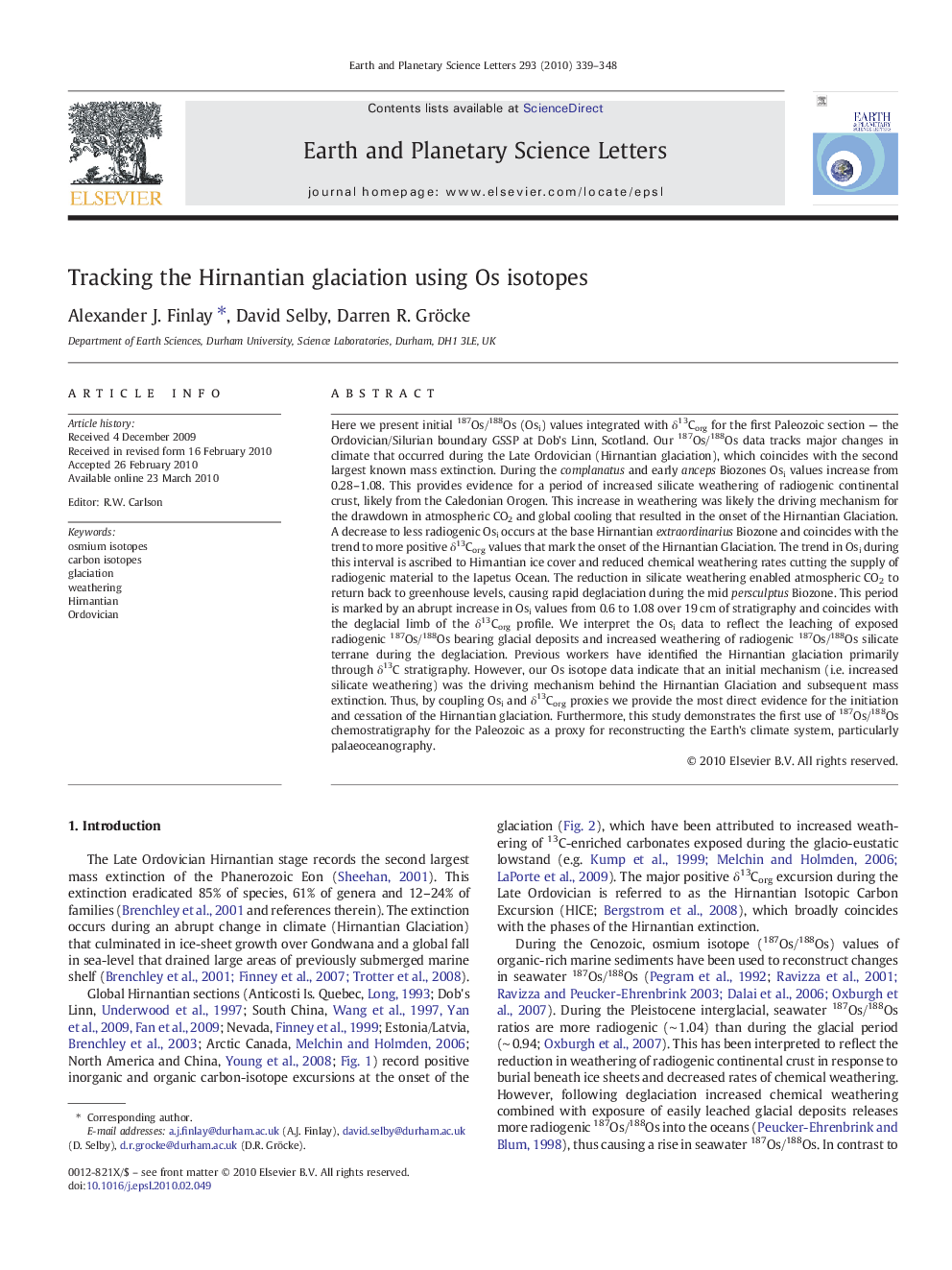| کد مقاله | کد نشریه | سال انتشار | مقاله انگلیسی | نسخه تمام متن |
|---|---|---|---|---|
| 6430991 | 1634853 | 2010 | 10 صفحه PDF | دانلود رایگان |

Here we present initial 187Os/188Os (Osi) values integrated with δ13Corg for the first Paleozoic section - the Ordovician/Silurian boundary GSSP at Dob's Linn, Scotland. Our 187Os/188Os data tracks major changes in climate that occurred during the Late Ordovician (Hirnantian glaciation), which coincides with the second largest known mass extinction. During the complanatus and early anceps Biozones Osi values increase from 0.28-1.08. This provides evidence for a period of increased silicate weathering of radiogenic continental crust, likely from the Caledonian Orogen. This increase in weathering was likely the driving mechanism for the drawdown in atmospheric CO2 and global cooling that resulted in the onset of the Hirnantian Glaciation. A decrease to less radiogenic Osi occurs at the base Hirnantian extraordinarius Biozone and coincides with the trend to more positive δ13Corg values that mark the onset of the Hirnantian Glaciation. The trend in Osi during this interval is ascribed to Hirnantian ice cover and reduced chemical weathering rates cutting the supply of radiogenic material to the Iapetus Ocean. The reduction in silicate weathering enabled atmospheric CO2 to return back to greenhouse levels, causing rapid deglaciation during the mid persculptus Biozone. This period is marked by an abrupt increase in Osi values from 0.6 to 1.08 over 19 cm of stratigraphy and coincides with the deglacial limb of the δ13Corg profile. We interpret the Osi data to reflect the leaching of exposed radiogenic 187Os/188Os bearing glacial deposits and increased weathering of radiogenic 187Os/188Os silicate terrane during the deglaciation. Previous workers have identified the Hirnantian glaciation primarily through δ13C stratigraphy. However, our Os isotope data indicate that an initial mechanism (i.e. increased silicate weathering) was the driving mechanism behind the Hirnantian Glaciation and subsequent mass extinction. Thus, by coupling Osi and δ13Corg proxies we provide the most direct evidence for the initiation and cessation of the Hirnantian glaciation. Furthermore, this study demonstrates the first use of 187Os/188Os chemostratigraphy for the Paleozoic as a proxy for reconstructing the Earth's climate system, particularly palaeoceanography.
Journal: Earth and Planetary Science Letters - Volume 293, Issues 3â4, 1 May 2010, Pages 339-348